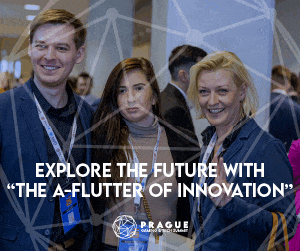Welcome to Blocks & Headlines, your daily op‑ed–style briefing cutting through the noise in blockchain technology, cryptocurrency markets, and Web3 innovation. Today’s dispatch examines two pivotal developments: how traditional asset managers are eyeing blockchain to overhaul back‑office operations and product lines, and Telegram’s bold launch of an open blockchain platform backed by top VCs. Together, these stories underscore a broader trend of convergence between legacy finance, social networks, and decentralized systems.
In this briefing, we’ll unpack:
-
Institutional Web3 adoption: The drivers and risks as asset managers explore tokenization, smart‑contract automation, and DeFi integration to modernize operations.
-
Social‑layer blockchains: Telegram’s move into the space, its implications for mass crypto onboarding, and the platform’s bid to leverage its 900 million‑strong user base.
Whether you’re a blockchain founder, a crypto‑native investor, or a financial‑services executive evaluating Web3 partnerships, our analysis will offer concise takeaways, pointed commentary, and contrarian perspectives to help you navigate today’s fast‑moving ecosystem. Let’s dive in.
1. Asset Managers Assert That Blockchain Can Modernize Operations & Reinvigorate Products
In a recent CoinDesk opinion piece, industry heavyweights argue that blockchain isn’t merely a speculative playground for cryptocurrencies and DeFi protocols—it’s a transformational technology that can streamline asset‑management workflows, cut reconciliations, and enable novel tokenized products.
Key points & commentary:
-
Back‑office revolution: Trad‑fi firms are grappling with siloed ledgers, cumbersome settlement cycles, and manual compliance checks. By building permissioned blockchains or leveraging Layer 2 networks, asset managers could achieve near‑real‑time settlement, reduce operational risk, and lower counterparty‑reconciliation costs by up to 70 percent.
-
Tokenized asset offerings: Beyond efficiency gains, tokenization unlocks fractional ownership of private‑market assets—think private equity, real estate, or art. Asset managers can launch blockchain‑native funds with 24/7 liquidity, broadening their investor base and reigniting fee growth in a zero‑rate environment.
-
Challenges & pitfalls: The road to true integration remains bumpy. Regulatory uncertainty around security tokens, interoperability hurdles between permissioned and public chains, and the need to retrofit legacy systems pose significant execution risks. Managers must balance innovation with robust compliance and enterprise‑grade security.
Source: CoinDesk Opinion
2. Telegram Blockchain: The Open Platform That Top VCs Back
Fortune reports that Telegram has unveiled its long‑rumored open blockchain, simply dubbed Telegram Chain, alongside a developer SDK and grant program. With seed backing from Ribbit Capital and Pantera Capital, Telegram Chain aims to embed native crypto transactions directly into chats, channels, and groups—paving the way for peer‑to‑peer payments, NFT drops, and on‑chain governance polls for its 900 million users.
Why this matters:
-
Social on‑ramp to crypto: Historically, a steep learning curve has hampered mass adoption. By integrating wallets and tokens into an app people already use daily, Telegram could materially lower onboarding friction—potentially minting the largest self‑custodial crypto audience overnight.
-
Platform‑economics implications: Telegram Chain’s native token (TGT) is slated for node staking and transaction fees. If Telegram channels adopt micro‑transaction tipping or NFT‑based fan clubs, the network effect could lock in creators and communities, boosting token utility and value.
-
Regulatory radar: Messaging apps have drawn scrutiny over user data and encryption. Embedding a blockchain raises fresh questions about KYC/AML compliance, token classification, and cross‑border payments. Telegram will need a sophisticated compliance framework to avoid the regulatory pitfalls that Bespoke and Paxful encountered.
Source: Fortune
3. A Transparent Blockchain Mechanism for Archeological Contributors
In a landmark study published July 2 in npj Heritage Science, researchers unveiled the Trust‑Based Blockchain Model for Contribution (TBBMC)—a novel approach to incentivize volunteers in open‑source archeological photogrammetry projects. By tokenizing contributions and leveraging smart contracts, TBBMC establishes ethical, transparent rewards that both fund and recognize the vital work of citizen scientists.
Key takeaways & analysis:
-
Volunteer engagement reimagined: Traditional OSSAP (Open‑Source Software for Archeological Photogrammetry) projects suffer from inconsistent volunteer motivation. TBBMC’s token‑based reward system ties digital currency issuance (via ICOs) directly to contributions—ensuring timely, verifiable compensation and bolstering long‑term commitment.
-
Operational efficiency through smart contracts: By automating milestone payments, ICO caps, and audit trails on Ethereum testnets, TBBMC reduces administrative friction, letting researchers focus on fieldwork rather than manual bookkeeping.
-
Broader Web3 implications: While tailored to archeology, TBBMC exemplifies how blockchain can modernize volunteer‑driven science, from environmental monitoring to citizen journalism—unlocking new data streams and funding models for public‑interest initiatives.
Source: Nature (“A Transparent Blockchain‑Based Mechanism for Contributors of Archeological Artifacts”)
4. TRON DAO Strengthens Ecosystem Ties at EthCC with MetaMask & Arkham
At the recent Ethereum Community Conference (EthCC) in Cannes, TRON DAO doubled down on cross‑chain collaboration, co‑hosting “Builder Nights Cannes” with MetaMask (600+ attendees) and a “Cannes Happy Hour” with Arkham (150+ leaders). These events underscore TRON DAO’s strategy to bridge Ethereum and TRON ecosystems—leveraging its $80 billion USDT supply to drive DeFi and stablecoin adoption.
Why it matters:
-
Cross‑chain community building: Co‑sponsored gatherings foster interoperability dialogues, encouraging developers to integrate TRON’s high‑throughput Layer 1 with Ethereum’s rich dApp ecosystem—potentially seeding bridges, wrapped assets, and unified developer toolkits.
-
Marketing meets substance: By becoming a WAGMI sponsor at a marquee Ethereum conference, TRON DAO signals it’s not just chasing TVL metrics but investing in relationships—a critical play as community trust increasingly dictates token valuation.
-
DeFi implications: With $80 billion in USDT on TRON, expanded Ethereum partnerships could supercharge liquidity flows, catalyze new yield‑farming pools, and pressure rivals (e.g., BNB Chain, Solana) to deepen their own cross‑chain outreach.
Source: CityBuzz (“TRON DAO Strengthens Blockchain Ecosystem Ties at EthCC with MetaMask and Arkham”)
5. MemeCore’s M‑Token Listed on Major Centralized Exchanges
What happened?
MemeCore, a community‑driven memecoin project notable for its viral NFT collaborations and on‑chain charity donations, announced the successful listing of its native M‑Token on three leading centralized exchanges: Gate.io, Kraken, and OKX. The listing went live on July 4, with initial liquidity pools opening at a $50 million valuation.
Details & implications:
-
Market liquidity boost: Access to major CEX order books immediately deepens liquidity, slashing bid‑ask spreads and supporting $M token’s price discovery. Early trading saw daily volumes exceeding $100 million, signaling robust retail and institutional interest.
-
Community governance elevation: MemeCore’s decentralized autonomous organization (DAO) will now allocate a portion of exchange‑listing incentives toward its “MemeFund,” which backs NFT charity drops, DeFi partnerships, and community‑voted grants—reinforcing the token’s utility beyond mere speculation.
-
Regulatory considerations: As memecoins draw heightened SEC scrutiny, MemeCore’s leadership has pre‑registered compliance filings in the U.S. and Europe, aiming to preempt potential delisting pressures and reassure users of its legitimacy.
Source: PR Newswire
Key Takeaways and Industry Implications
Today’s briefing underscores several pivotal themes shaping blockchain and crypto:
-
Institutional embrace meets legacy hurdles: Asset managers recognize blockchain’s capacity to revolutionize operations and launch tokenized products, yet face regulatory and integration challenges that demand careful piloting and stakeholder coordination.
-
Social platforms as on‑ramps: Telegram Chain exemplifies how Web2 giants can drive mass crypto adoption by embedding transactions natively in ubiquitous apps—potentially redefining user acquisition and token-economics paradigms.
-
Web3 for public‑interest science: The TBBMC model illustrates blockchain’s untapped potential for open‑science funding and volunteer incentives—a use case that extends well beyond traditional finance into cultural and environmental domains.
-
Cross‑chain cooperation is table stakes: TRON DAO’s ETHCC collaborations with MetaMask and Arkham signal that top ecosystems must interoperate to retain developer mindshare and liquidity—and that community events are as strategic as technical bridges.
-
Memecoin maturity: MemeCore’s exchange listings and governance enhancements reveal the memecoin sector’s growing institutionalization, moving from fringe viral bets to structured tokens with defined utilities and compliance frameworks.
Conclusion
As blockchain technology continues its march from speculative playground to enterprise and societal infrastructure, today’s developments highlight a nuanced landscape:
-
Operational modernization through permissioned and public chain integration;
-
User‑centric on‑ramps leveraging social networks to demystify crypto;
-
Innovations in incentive design for science, culture, and community foundations;
-
Ecosystem interoperability as a keystone for developer engagement and liquidity;
-
Token evolution from memes to governance‑backed assets with tangible utilities.
For industry participants—whether builders, investors, or regulators—the imperative is clear: engage with blockchain’s diverse applications, foster interoperable frameworks, and elevate governance standards to realize the technology’s transformative promise.
Stay tuned to Blocks & Headlines tomorrow for another deep dive into the blockchain stories that matter.















Got a Questions?
Find us on Socials or Contact us and we’ll get back to you as soon as possible.